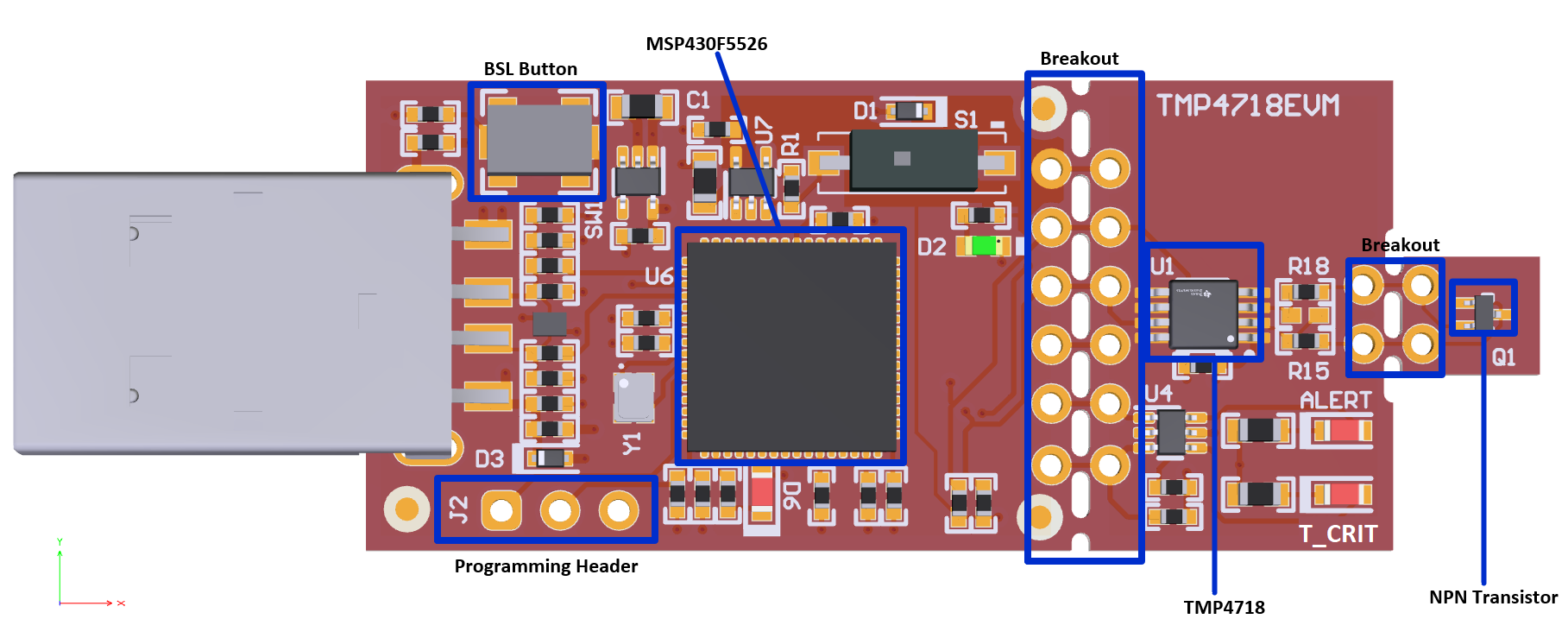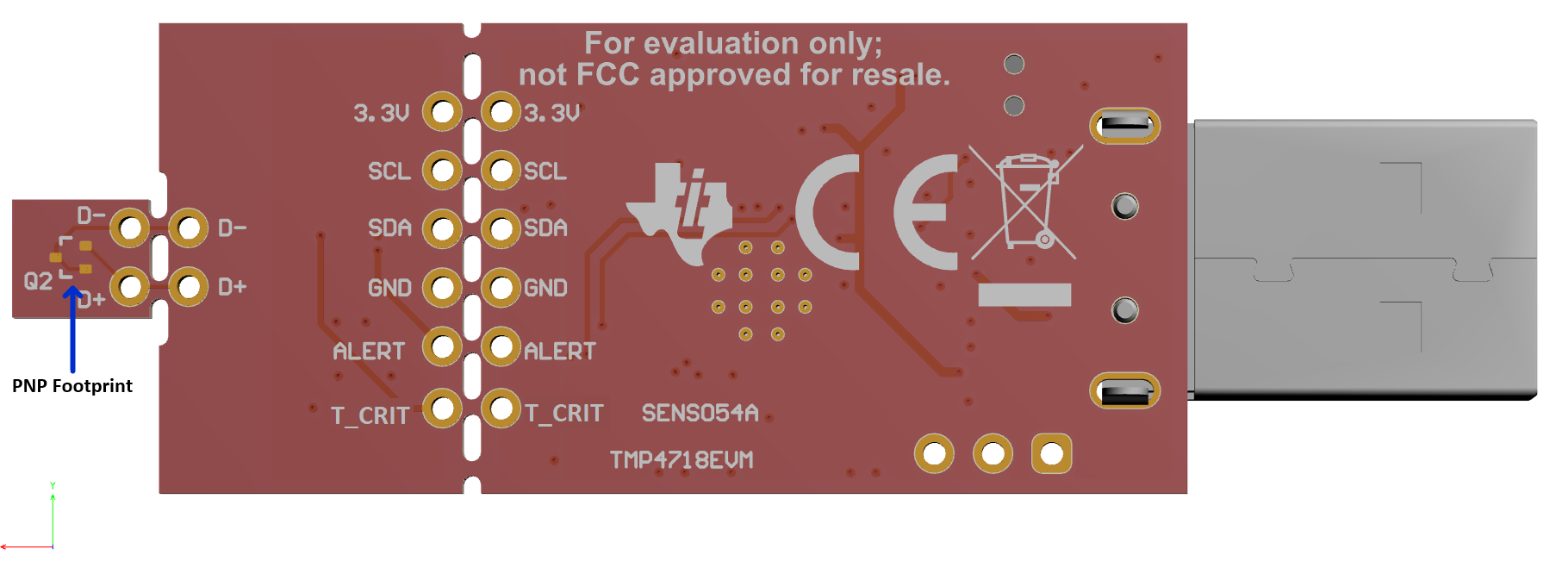SNIU051 March 2023
2.1 Board Connectors and Components
#GUID-A1CFED33-74F2-4963-ADC1-09AE64F6FB3D shows the top side of the TMP4718EVM with callouts for the USB connector, breakout sections, the TMP4718 device, and the remote NPN transistor. #GUID-CD47896D-63AE-4A33-9359-49168F2ADE51 shows the bottom side of the TMP4718EVM, which has a footprint available for the user to populate a PNP transistor. The USB connector is directly plugged into the computer for power and communication from the computer to the USB2ANY mircocontroller. The engineer can use the perforated breakouts to break off certain sections of the EVM and connect these sections to external systems. Users can also solder headers to the vias to use as test points.
 Figure 2-1 TMP4718EVM Board Top Side
Figure 2-1 TMP4718EVM Board Top Side Figure 2-2 TMP4718EVM Board Bottom
Side
Figure 2-2 TMP4718EVM Board Bottom
Side